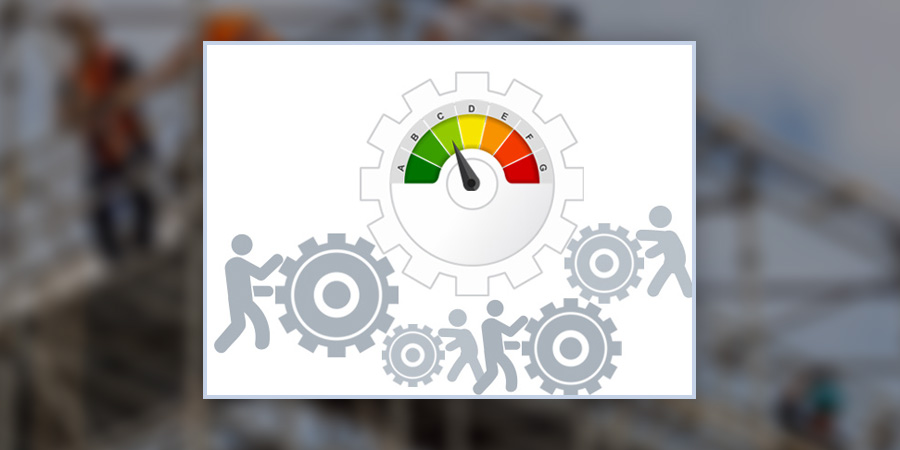
Table of Contents
Introduction
How can scaffolding productivity be calculated with so many challenges to inspecting and maintaining the scaffolding operation? And is there such a thing as productive scaffolding?
Scaffolding is a temporary structure used to aid humans in elevated work. We all know its definition, but do we know that scaffolding operations can be measured? Moreover, these measurements can lead to proactive planning to increase productivity.
Scaffolding operations require careful planning and diligent and timely execution. Once the building project kicks off, we thoroughly understand the demand-supply network. Apart from the technical demands, there are functional demands within the scaffolding lifecycle—inspection and maintenance.
Owing to the complex nature of operations, authorities face the massive challenge of monitoring and measuring activities at multiple scaffolding sites in a single project. Being physically present at each working site within a given area/location makes it challenging to monitor activity. Therefore, it is difficult to identify whether the teams allocated to a particular project are working as expected. Similarly, monitoring material used in a single scaffolding site becomes challenging.
Now, how can scaffolding productivity be calculated with so many challenges to inspecting and maintaining the scaffolding operation? And is there such a thing as productive scaffolding?
We are asking too many questions and not revealing any answers, right? So, let’s understand the basics of scaffolding to find the answers to all our questions.
Understanding Scaffolding Productivity
Scaffolding productivity, in layman’s terms, means measuring the efficiency and effectiveness of scaffolding tasks. It involves jolting down the tangible results of labor, materials, resources, and time spent erecting, maintaining, and dismantling scaffolding structures. These tangible records also include the speed of assembly, adherence to safety protocols, and the contribution of scaffolding to the overall project’s success.
Now, several factors contribute to scaffolding productivity. These are;
The better the conditions, layout, and training of the entire project, the more efficient the scaffolding process is. However, some challenges hamper the productivity of scaffolding operations. Let us go through them in detail.
Complexity
Let us face it. Scaffolding is a complex task. It involves multiple activities performed simultaneously, isolating every task challenging.
Data Collection
Gathering accurate data on scaffolding activities, such as time spent on tasks, material usage, and worker productivity, can be challenging. Manual data collection methods may be prone to errors and inconsistencies.
Integration with Other Processes
Integrating scaffolding systems with existing project management or other systems can be complex and require additional resources, time, effort, and expertise.
Addressing these challenges requires careful planning, investment in technology and training, and a commitment to continuous improvement in measuring and optimizing scaffolding productivity.
Tools and Technologies for Tracking Productivity
Software technologies have proven to be game-changers, empowering professionals in scaffolding operations. It’s becoming evident that many of these complex procedures can be simplified with the right technology.
One significant benefit of such technologies is the drastic reduction in the erroneous estimation/consumption of scaffolding material to be deployed, giving professionals a more accurate and confident approach to their work.
With Scaffolding software, professionals can now easily estimate the material needed based on the scaffolding request and scaffold dimension vs material matrix. This efficient process allows the balance material to be accounted for as a reference within the software, accurately assessing the exact ‘tonnage’ for the particular job. This level of precision and reliability reassures professionals about the efficiency and accuracy of these tools.
Using the software, authorities can effectively measure the productivity of teams working on a particular job. This is crucial in meeting the demands of measuring the optimum work done.
Software users can accurately measure the performances of each individual in the scaffolding team, inspiring them to strive for better results. This allows authorities to cross-reference productivity vis-a-vis specific jobs, leading to a more efficient and productive work environment.
After all, as the famous saying goes, “What gets measured gets managed, and what gets managed gets results”!
So yes, there we are!
We have answered the questions that
What is productive scaffolding?
Scaffolding metrics that can be measured can lead to positive scaffolding productivity.
How do you calculate scaffolding productivity?
There are tools and technology to measure scaffolding productivity, and they have numerous benefits.
The Scaffolding Management Software
Scaffolding management software offers a comprehensive solution for planning, monitoring, and optimizing scaffolding activities within construction projects.
Its key features include:
Automated Scaffolding Operation Life Cycle
It creates detailed plans for scaffolding erection, maintenance, and dismantling, including scheduling tasks and allocating resources.
Inventory Management
It enables tracking and managing scaffolding equipment and materials, including inventory levels, usage, and procurement.
Resource Allocation
The software assigns personnel and equipment to specific tasks, optimizing resource utilization and minimizing downtime.
Safety Compliance
Many scaffolding management software solutions incorporate safety features, such as safety checklists, hazard assessments, and compliance tracking, ensuring adherence to safety regulations.
Reporting and Analytics
Advanced reporting and analytics capabilities provide insights into productivity metrics, performance trends, and areas for improvement.
While incorporating scaffolding management, organizations can also integrate wearable technology to monitor worker activity, use IoT sensors to collect real-time data, and use technology to improve the efficiency of scaffolding operations and measure scaffolding productivity per day.
Best Practices for Productive Scaffolding
Now, we know that scaffolding metrics and scaffolding management systems can play wonders in increasing scaffolding productivity. However, here are some best practices for improving scaffolding productivity.
Detailed Planning
Planning is crucial when it comes to scaffolding. Every phase of the scaffolding process, from erection to dismantling, should include timelines, resource allocation, and task dependencies. Coordination with other project activities is also a must to minimize downtime. Back-up management and resource planning must also be proactively planned.
Proper Training
The participants in scaffolding operations must be thoroughly trained. This does not mean training is only for performing the scaffolding processes. They must be trained to use the software and update their actions in emergencies.
Maintenance
Scaffolding equipment must be in good condition for uninterrupted and efficient operations. Routine inspections, regular maintenance, and immediate repair of faulty mechanisms can ensure this.
Conclusion
If carried out efficiently, scaffolding operations can increase project productivity. Scaffolding software management can be very helpful in measuring scaffolding productivity. The metrics of these operations can significantly improve the productivity of scaffolding operations, leading to more efficient project execution, enhanced safety, and better utilization of resources.



